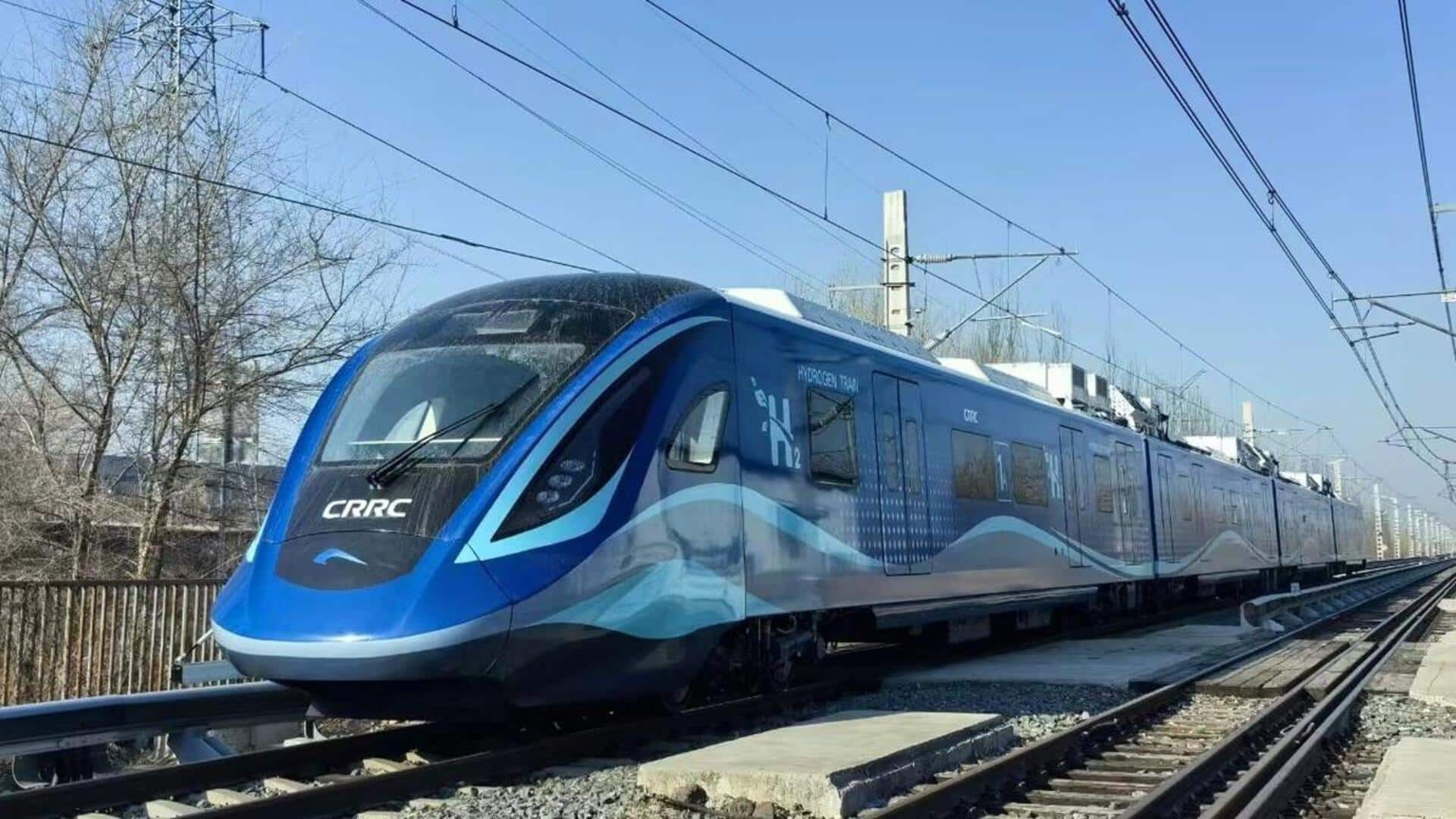
Everything we know about China's first hydrogen-powered train
What's the story
China has completed a trial run of its inaugural hydrogen-powered train, signifying a substantial advancement in its quest for greener urban transport. This momentous occasion transpired on Thursday in Changchun, Jilin province. The train, engineered by CRRC Changchun Railway Vehicles, achieved speeds of 160km/h even when fully loaded, showcasing a significant leap in the utilization of hydrogen energy technology for rail transit.
Test results
Hydrogen-powered train paves the way for energy efficiency
In contrast to conventional trains that depend on fossil fuels or overhead electric cables, this groundbreaking train is equipped with a hydrogen energy propulsion system. Test results indicate that the system offers a robust and sustainable power source, with an average energy usage of merely 5kWh per kilometer. This not only fulfills all design specifications but also places the train at the vanguard of global energy efficiency in rail transit.
Durability
Rigorous testing ensures safety of hydrogen-powered train
The hydrogen-powered train boasts an impressive travel range exceeding 1,000km, significantly diminishing the need for regular refueling stops. Before the trial run, the hydrogen power system underwent rigorous testing for durability, performance under extreme temperatures (ranging from -25°C to 35°C), resistance to vibration, electromagnetic compatibility, and fire safety. These thorough tests guarantee the secure and dependable functioning of the train.
Scenario
Hydrogen-powered rail transit: A milestone for China
The successful completion of the trial operation marks a significant advancement in China's rail transit sector, opening doors for the broader integration of hydrogen propulsion technology. Moreover, it plays a pivotal role in attaining crucial technological self-sufficiency and oversight in the advancement of top-tier transportation equipment. Hopefully, this trend will extend to more nations striving for energy equilibrium in the near future.